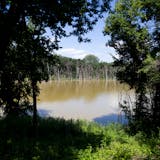Partnerships are never easy — just ask Ginger Rogers, who had to do on skates everything Fred Astaire did, only backwards. But when it works, it's magical! Mayo and Rochester have had a similar partnership, though in this case, neither is skating backwards. Rather, both are looking forward 10 or 20 or perhaps a hundred years.
Believe or not, the weather was a major factor in kick-starting the Mayo-Rochester partnership. In 1883, an F5 tornado struck Rochester, killing 37 and injuring 200. Only three hospitals existed outside of the Twin Cities, none in Rochester, so victims were attended to in the local dance hall.
The Sisters of St. Francis did their best but soon realized that what Rochester needed was a hospital. They set about this mission by promising William W. Mayo that they would build a hospital if he would provide clinical services. He consented, provided they could raise the capital.
The funds were given by the good people of Rochester. A partnership was born. Two sons later (Will and Charles), a medical model was born. Today, the model and the partnership are world-class. But in the competitive world of business, and especially health care, there are no guarantees. Frankly, Mayo can't sit on its assets. It has to leverage them to create a new future.
Rochester's leadership and citizens trust Mayo to do what it says: Build a $5.6 billion complex for its delivery of care, research and education. To make this happen, the partnership is seeking $525 million in state bonding proceeds that would be generated by the increase in state tax receipts — sales and wages, mainly.
I once lived in a town about 200 miles north of Rochester. By the late 1800s, virtually all the white and red pine had been clear-cut, and the village of about 1,000 faced extinction. There was no economic reason for being.
Then a few leaders fastened upon the idea of harnessing the rapids of the Mississippi River, much like St. Anthony had done to power the grindstones that turned wheat into flour.
To build a dam would cost the tidy sum of $7,400, which was an astronomical amount, given that the combined payroll of all the citizens was less than $1,400. But on Christmas Eve, the 61 voters unanimously approved the bonding to build the dam. Soon thereafter, a paper machine was built.



